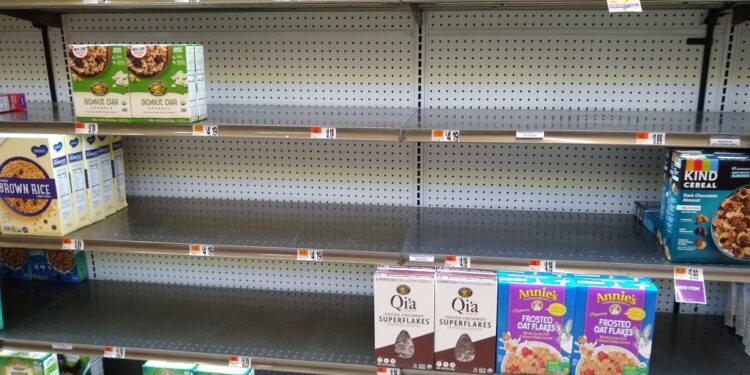Real gross domestic product (GDP) is confirmed to have shrunk at an annualized rate of 0.6% in the second quarter of 2022, according to a Thursday report from the Bureau of Economic Analysis.
New data from the agency confirms the figure, which had already been revised to 0.6% from an earlier estimate of 0.9%. Output contracted at a 1.6% annualized rate in the first quarter.
“The decrease in real GDP reflected decreases in private inventory investment, residential fixed investment, federal government spending, and state and local government spending, that were partly offset by increases in exports and consumer spending,” the Bureau of Economic Analysis explained. “Imports, which are a subtraction in the calculation of GDP, increased.”
The two consecutive quarters of negative growth places the United States into technical recession territory. Although the National Bureau of Economic Research, a nonprofit entity generally recognized as the country’s business cycle scorekeeper, defines a recession as “a significant decline in economic activity that is spread across the economy and lasts more than a few months,” the entity also examines more granular data in declaring periods of recession.
The Biden administration has leaned upon the lack of an official declaration while spurning criticism about the outcomes of its economic agenda.
“While some maintain that two consecutive quarters of falling real GDP constitute a recession, that is neither the official definition nor the way economists evaluate the state of the business cycle,” the White House said in a blog post. “Instead, both official determinations of recessions and economists’ assessment of economic activity are based on a holistic look at the data — including the labor market, consumer and business spending, industrial production, and incomes.”
Treasury Secretary Janet Yellen has likewise denied that the economy is “in recession.” Instead, she claimed two months ago that the nation is in a “period of transition in which growth is slowing,” which is “necessary and appropriate” following recovery from the lockdown-induced recession.
Beyond the first half of the year, the Federal Reserve Bank of Atlanta predicts that growth in the third quarter will occur at an annualized rate of 0.3%. As landmark reports regarding employment, inflation, private inventories, manufacturing output, and the housing market have been published over the past two months, analysts in Atlanta have repeatedly downgraded their growth forecast for the third quarter.
The United States has witnessed a lackluster economic recovery over the past two years under several disruptions — including labor shortages, supply chain bottlenecks, and the Russian invasion of Ukraine — all of which have contributed to worsening inflationary pressures.
The phenomena have eroded Americans’ trust in the Democratic Party to handle economic policy, according to a recent poll from ABC News and The Washington Post. The economy and inflation are key issues among voters, with 84% considering the former to be a top factor on their minds. The Republicans lead the Democrats by a 16% margin and a 19% margin with respect to trust in handling the economy and inflation, respectively.
Price levels between August 2021 and August 2022 rose 8.3%, according to data from the Bureau of Labor Statistics, marking a slight moderation from an 8.5% year-over-year increase in July and a 9.1% year-over-year increase in June. As core inflation continues to climb, the Federal Reserve responded last week by increasing the target federal funds rate by 0.75% — a move that triggered a stock market selloff and sent the Dow Jones more than 1,500 points lower than the level seen on the day of Biden’s inauguration.











